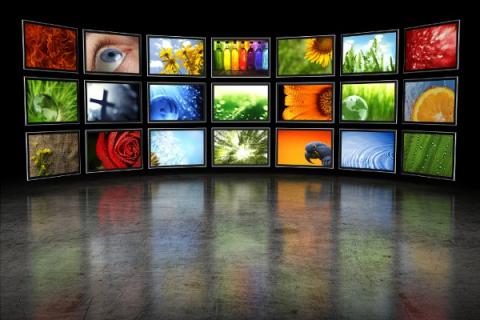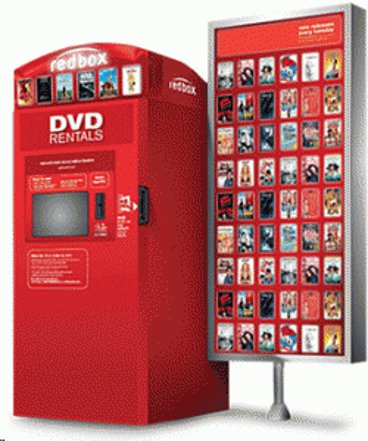Is Streaming Another Fad or a Lasting Trend in At-Home Entertainment?

If there’s one staple of American life, it’s entertainment. Movies have been around since the 1920s, providing the populace with forms of escapism and storytelling. And while there’s nothing quite as leisurely as actually going to the movie theater to see a film, the at-home theater experience is quickly gaining speed as the popular entertainment activity of choice.
But film as a format is dying out. It was announced at this year’s CinemaCon in Las Vegas by the National Association of Theatre Owners (NATO) that 20th Century Fox would end 35mm film distribution. The CEO of NATO, John Fithian, had predicted at last year’s CinemaCon that distribution of the celluloid format would end by 2013.
The switch to digital distribution is mostly economical. Whereas it costs about $1500 per theater, digital distribution is one-tenth of that, around $150. Most theaters also switched to digital projection after the release of Avatar, James Cameron’s 3-D digitally filmed movie.

Of course, how movies are made will affect the format of the home-video and video rentals. VHS had petered out by the mid-2000s with the introduction of the DVD. The DVD format had a higher resolution and better sound quality than VHS, but it was expensive to remaster films for the new format This issue has repeated itself with the existence of Blu-ray discs -- most classic films aren’t available on Blu-ray because of the digital and photochemical process it takes to change formats.
Today, there are many options for at-home movie viewers. For streaming, there’s Netflix, Hulu and even Sidereel, while DVDs can be rented from up-and-coming giant Redbox, Netflix, Blockbuster.com and the rare movie-rental store.
But more and more companies are switching to streaming. Dish Network Corp. acquired Blockbuster after its bankruptcy and launched a streaming service last October. And while Redbox currently offers physical DVD rentals, the company has partnered up with Verizon to create a streaming movie service as well, thereby competing with Netflix.

According to an L.A Times article from February, "The most instant way for customers to access content is to have the option of either pushing a button or going on a two-minute drive to the store,’ Bob Mudge, president of Verizon consumer and mass business markets, said in an interview,” in regards to the partnership of Verizon and Redbox. That statement also sums up today’s rental consumer culture.
What does this mean for entertainment today? Even with the arrival of Redbox, which has rented more than 1.5 billion movies and games since March 2012, video streaming seems to be the mainstay for at-home entertainment.
YouTube and Hulu are good examples. YouTube is free and allows its users to upload videos of mostly everything, given that it doesn’t infringe copyright. But the website has also started to offer free movies, although the selection is eclectic. Hulu also offers free streaming of current television shows and movies. But after a certain date, available content switches to Hulu+ which is the company’s own paying streaming service, for current and back seasons of TV shows, as well as movies. The price is $7.99 per month for unlimited streaming, similar to Netflix’s current plan.
While Redbox is bringing back the DVD rental, it currently can’t compete with accessibility. Both Netflix and Hulu+ offer streaming onlineon iPads and iPhones, on video game consoles, and Blu-ray systems.

More evidence for online streaming? Cable companies are looking into it as well. Companies like Netflix hold licenses to stream popular movies and television shows from bigger networks. Netflix used to have a deal with Starz that recently ended, shrinking the rental-company’s movie selection.
But these licenses also endanger cable networks’ ad revenue. An article from Stop the Cap points to the example of Nickelodeon. The cable network had licensed some shows to Netflix, and analysts found that households chose the on-demand version instead of traditional TV viewing.
In the same article, Craig Moffett, an analyst with Sanford Bernstein, is quoted as saying “Broadband is increasingly the flagship product, not the video distribution business.”
With this in mind, it might be easy to conclude that online streaming will eventually reign as the at-home experience. If we look at the numbers, Netflix has roughly 26.5 million customers: 10 million of them rent DVDs, and 7 million of the 10 million also stream content. Redbox has roughly 37,000 kiosks and has rented more than 1.5 billion movies and games.
What it comes down to, though, is how the movie and television companies will distribute their products. It is essentially cheaper, on both ends, to offer content via streaming. Also, as people become more engrossed in technology and its instant-gratification services, video streaming will become the top contender for products.
Author Bio:
Gabriella Tutino is a contributing writer at Highbrow Magazine.





























































































































































































































































































































